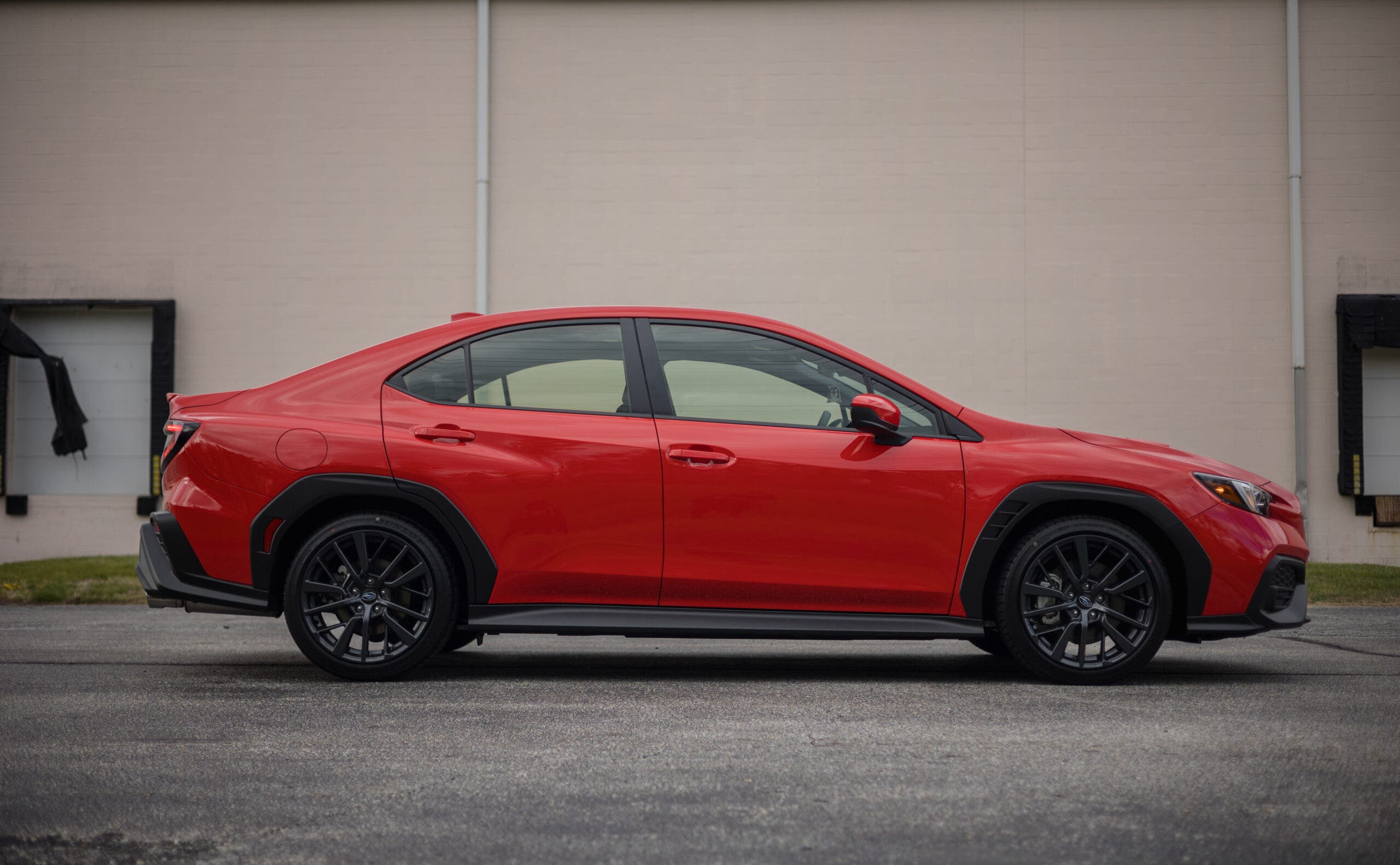
Procrastinating Extinction - 2022+ Subaru WRX Baffled Oil Catch Can R&D, Part 1 - Concept and Design Plans
The days of the internal combustion engine are numbered. That's not much of a surprise given the impending electrified takeover, but keeping our precious gas burning, manual shifting, turbocharged machines in proper working order is that much more important. The trouble is that the VB WRX's main nemesis is itself, or at least the by-product of its operation. Like every WRX before this one and fossil fuel-powered engine to hit the streets, blow-by and carbon build-up lurk in the vehicle's intake tract. Not to worry, though. We're already on the case to preserve the WRX's power plant.
If you're scratching your head at the notorious boogyman that is blow-by and how to prevent this monster from attacking your WRX, let's review. Any internal combustion engine operates by using thousands of tiny explosions to drive the piston to the bottom of the cylinder. This process turns the crankshaft, generating the power to propel you down the highway. The downside is that not all of the combustion gasses follow the rules and exit the cylinder through the exhaust. Rather, they sneak past the piston rings and into the crankcase, causing pressure. Pressure in the crankcase is not a good thing, so every engine has a vent to relieve this rebellious gas.
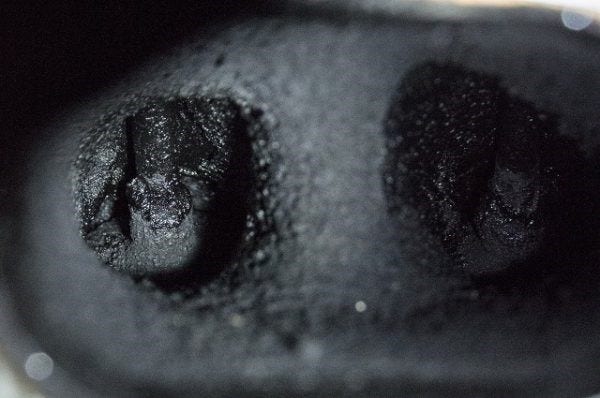
This crankcase pressure is even more nefarious, however. As this pressure vents, it brings fuel vapors and oil droplets, known as blow-by, along with it. In the olden days, blow-by was mitigated by just spurting it out the side of the engine block, but that solution needed to be rectified for obvious reasons. Modern engines, including the direct-injected FA24-H4-T under the hood of the WRX, use a positive crankcase ventilation system, which routes the crankcase pressure back through the intake as recycled air, but brings the murky mix along with it. These fuel and oil vapors tend to stick to intake components, especially the unguarded valves resulting in diminished power and efficiency over time.
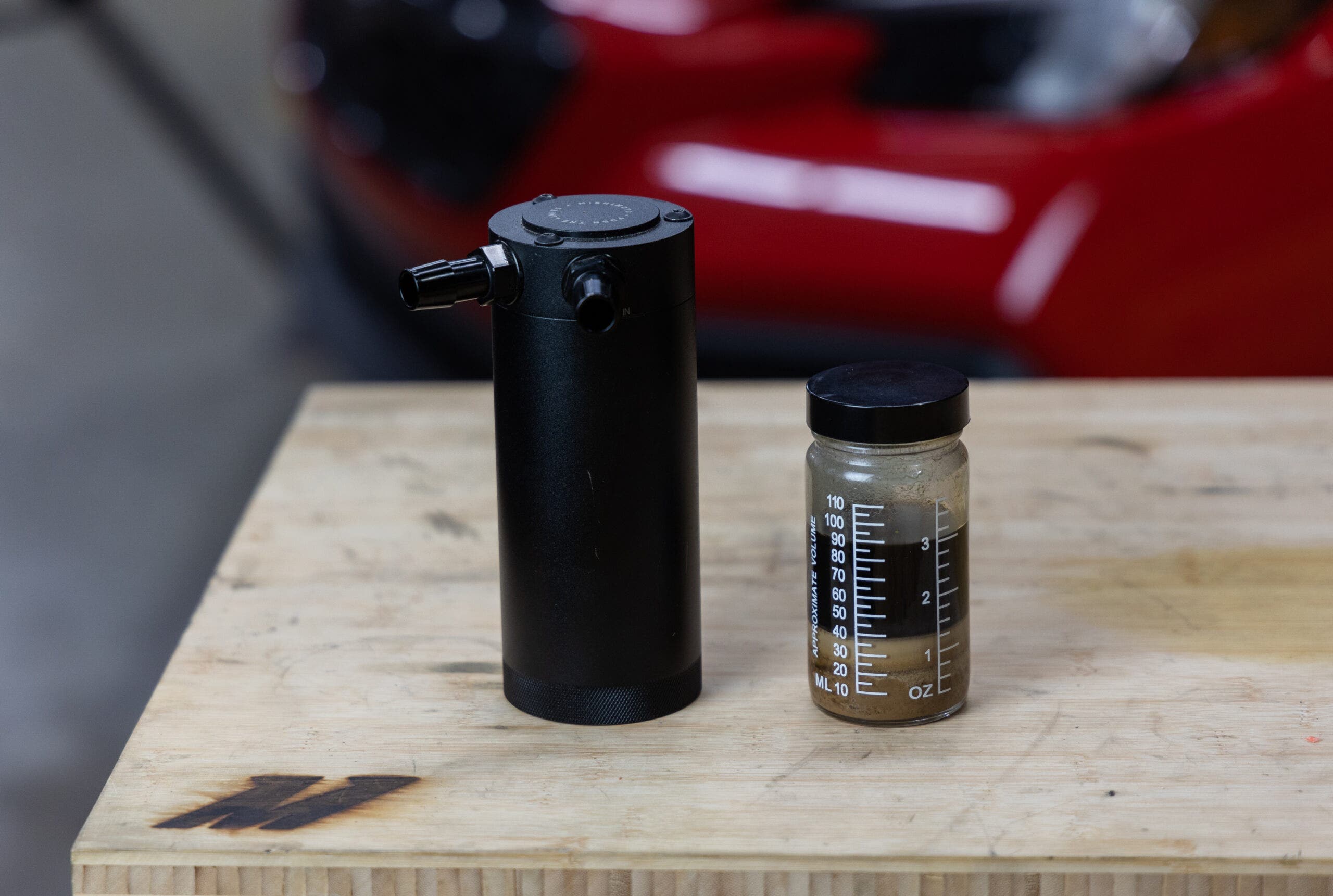
One of the best means of slowing carbon's grip on your road-going rally car's valves is with the help of a catch can. So, we got right to work adding one to our WRX's PCV system. Right away, though, we hit some roadblocks. While this WRX shares some similarities with the previous model, the new powerplant threw a wrench into our gears, specifically regarding the size of the PCV connections. In short, they're huge. Typically, these lines measure at about 3/8" to ½," which works perfectly with our catalog of lines and fittings. Subaru, however, opted for a line hovering around 1", which dashed any hopes of adapting our existing kit for the new engine.
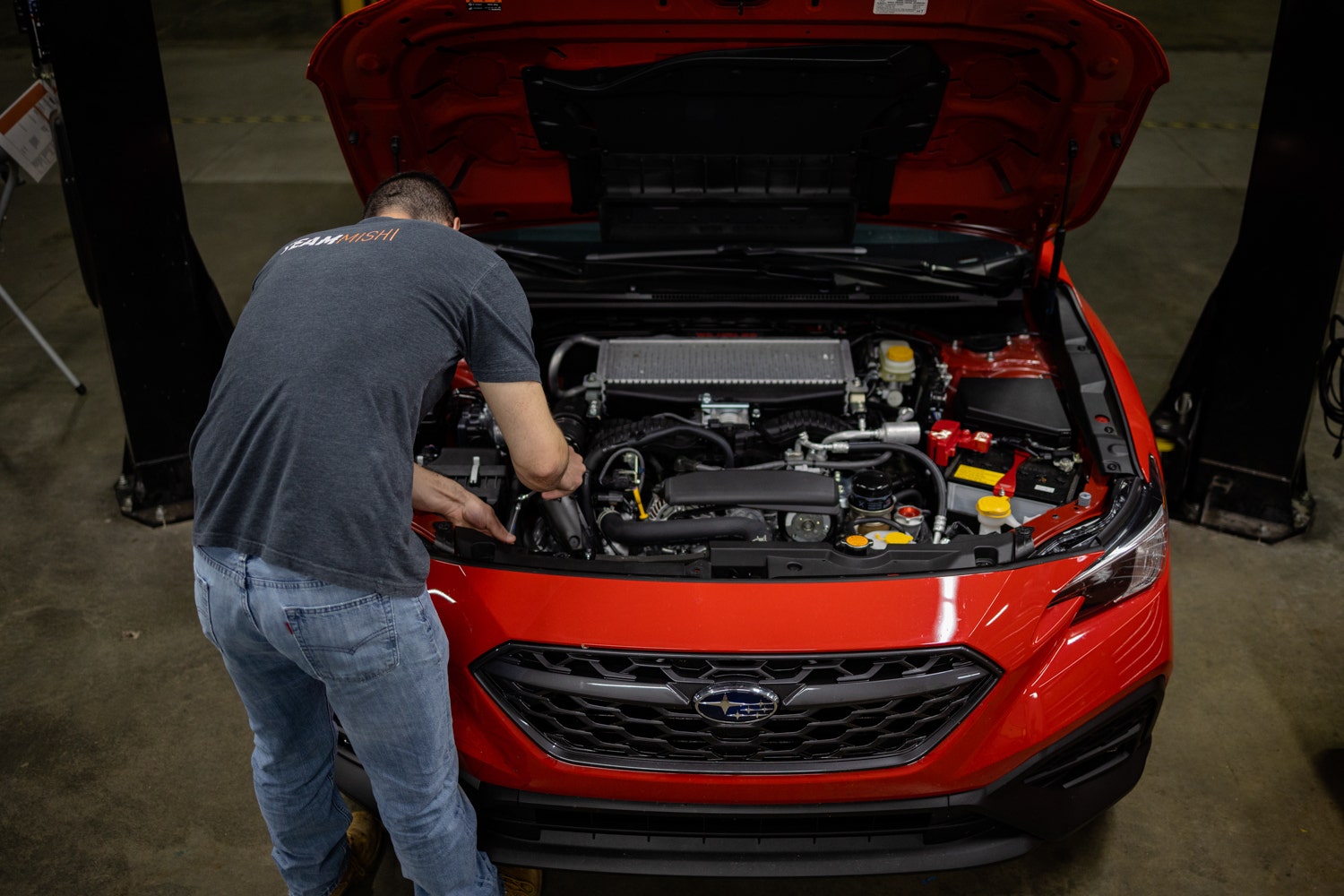
Instead, our engineer started from scratch on this kit's design. Luckily, we have a range of catch tops, one of which was specifically designed for the larger lines typically found under the hoods of BMWs. Also, thanks to that prior experience, we had 19mm lines at our disposal and ready for installation on our WRX, but we just needed a mounting location for this setup.
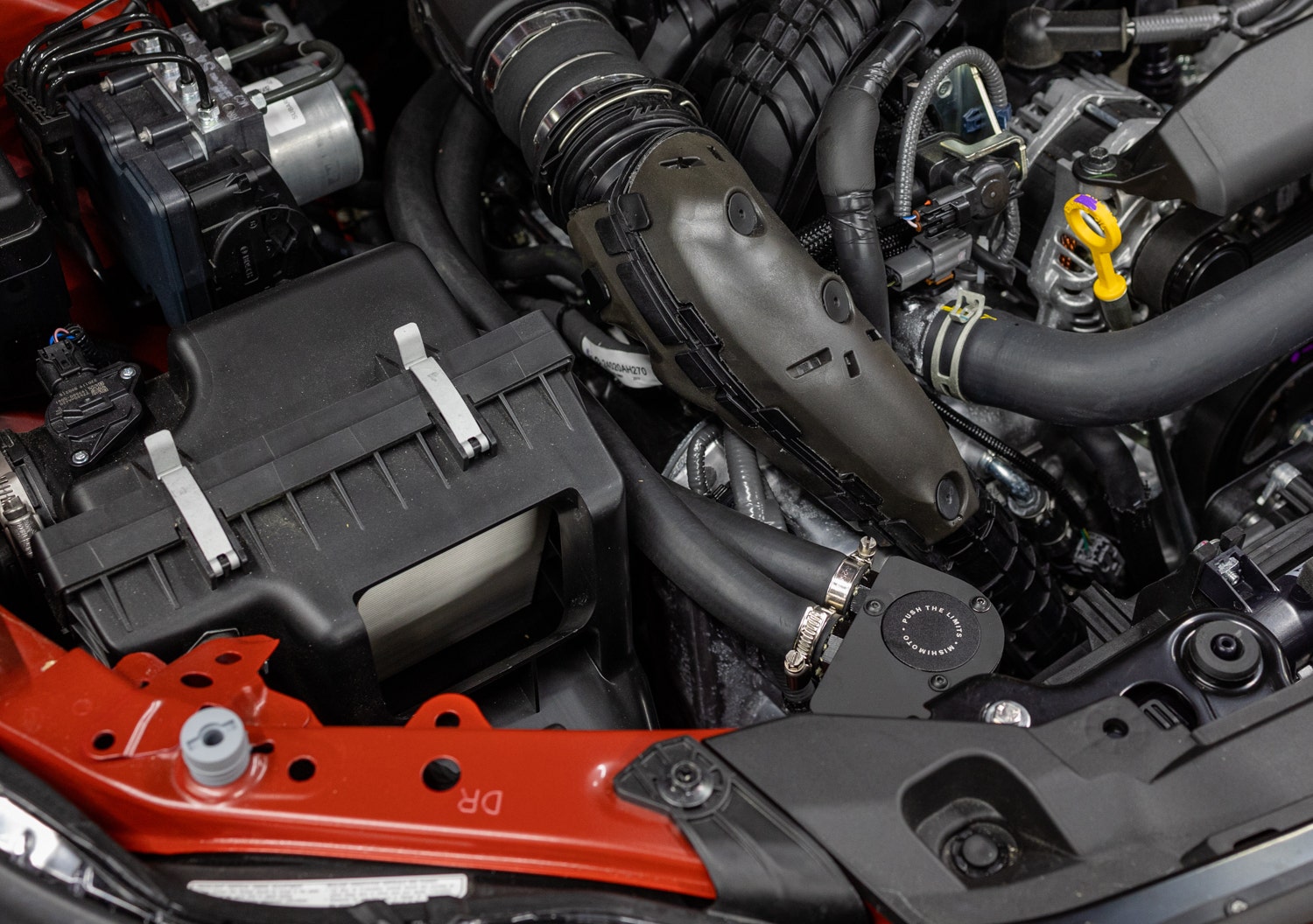
Like any modern vehicle, the engine bay in the latest WRX is cramped. Even with the flat-four layout, and low mounted turbo, it's tricky to find a home for our catch can. So, drawing inspiration from the previous generation kit, our engineer, Anthony, found a cozy spot on the radiator support. This location is a solid foundation for the bracket, which will keep it from running away under heavy vibrations, and provides a direct path for our lines to the PCV connections.
With our prototype complete, the only thing left to do is ensure it works without causing any new problems. Given stringent regulations on emissions and that we're tapping into the PCV system, we want to ensure that adding this catch can doesn't result in any unwanted check engine lights. In addition, we also wanted to be sure that a slightly smaller hose size would still operate without issue on this application. So, we sent our WRX out on the highways for our standard 1000-mile preliminary test, which will determine if our kit plays nice with the WRX's sensors and give us a gauge on this particular system's service interval. As our Subaru galavants around the local highways, Anthony is adding the final touches on this kit's design, so make sure you head over to part two to check out our latest updates:
Procrastinating Extinction - 2022+ Subaru WRX Baffled Oil Catch Can Part 2 - Design Updates
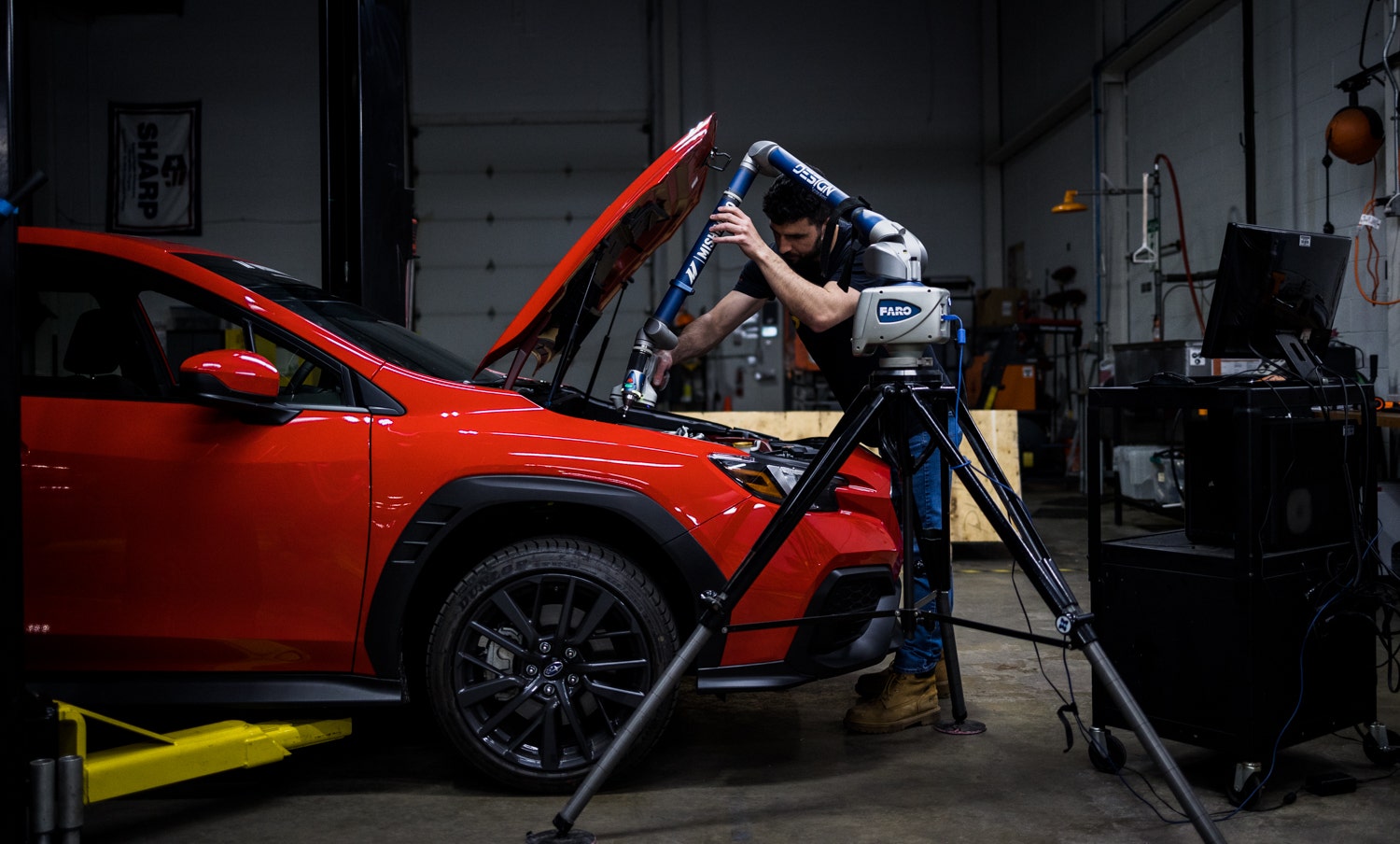
Thanks for Reading!
-Nick









